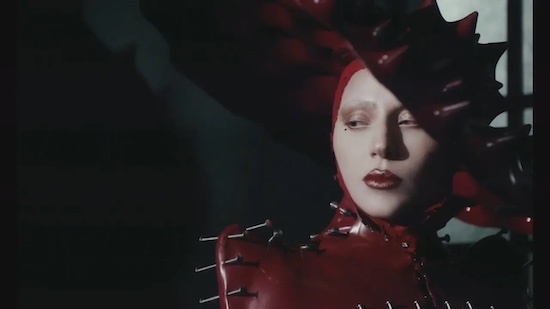
During the commercial break of the 67th Annual Grammy Awards, Lady Gaga debuted her new song and the accompanying music video, “Abracadabra.” Dressed in reptilian red from head to toe, tapping on a red microphone, a nefarious Gaga (who represents the “Lady in Red”), motionless in the face, proclaims, “Dance or die.”
The camera cuts to an overview of 30 dancers, all dressed in white, with a different version of Gaga emerging, now wearing an extravagant “Swan Lake”-esque costume, as the fierce beat emerges. The accelerating bass is instantly reminiscent of Charli XCX’s “Von Dutch,” although with much grander production. More significant, however, is the song’s connection with a broader renaissance in pop music that celebrates personality and maximalism, which Gaga has always been at the forefront of. We have seen a return to a bold, maximalist style of music reminiscent of upbeat hits performed by Kesha, Katy Perry, and Lady Gaga with sexually explicit lyrics and unapologetic authenticity, which has been resurrected with 2024 albums such as Sabrina Carpenter’s “Short n’ Sweet,” Billie Eilish’s “HIT ME HARD AND SOFT,” and Chappell Roan’s “The Rise and Fall of a Midwest Princess.”
The premiere of “Abracadabra” is a reminder of how Gaga has always been an innovator and forward thinker in music production with her ability to constantly push the boundaries of production and artistic value, fusing both of these elements to showcase her unprecedented sonic command. From “Born This Way” to “Til It Happens to You,” she has not only shown her unique ability to transition between many different musical genres, but also how an artist can infuse their music with social and political messages.
Gaga’s new industrial-dance inspired album, “Mayhem,” is set to release on March 7, 2025 and promises to restore the carefully arranged anarchy of her previous albums.
“The chaos I thought was long gone is actually fully intact and ready to greet me whenever I’d like,” Gaga said in an interview with Elle. “Part of the message of even the first song on the album is that your demons are with you in the beginning, and they are with you in the end and I don’t mean it in a bleak way. Maybe we can make friends sooner with this reality instead of running all the time.”
In the music videos for both singles from “Mayhem,” “Disease,” and “Abracadabra,” she chooses to represent this chaos with two versions of herself, each trying to kill the other. In the “Disease” music video, the bloody, all-black Gaga sings while the innocent Gaga, who is attempting to flee the scene—dancing, of course—is defeated.
“I could play the doctor, I can cure your disease / If you were a sinner, I could make you believe / Lay you down like one, two, three / Eyes roll back in ecstasy,” the bloody Gaga sings.
In “Abracadabra,” the two versions of herself, both with the support of a sharp dance crews, fight through their opposing choreography.
“Abracadabra, amor-oo-na-na / Abracadabra, mortal-oo-ga-ga / Abracadabra, abra-oo-na-na / In her tongue she said, ‘Death or love tonight’ / …. / Feel the beat under your feet, the floor’s on fire,” she sings.
The two versions both represent Gaga’s return to her dark dance-pop roots with her signature synths and compressed drums that accelerate at the chorus. But with “Abracadabra”—which continues her nonsensical lyrical impulses included in songs such as “Bad Romance” and a similar production approach as her classics like “Just Dance” and “Alejandro”—Gaga returns to pop stardom just when we need her most. Although many internet critics prescribed the song as Gaga “reheating her nachos,” to view this new music as a simple repetition of her past work is to ignore her artistic mastery of the material: the complex melodies, intricate arrangements, and creative polarization of the self into a work that feels more like a hyper-personal conversation. To refer to the music this way ignores the intricate artistic ideas that Gaga has accumulated as she reclaimed her throne.
Carter Appleyard can be reached at cappleyard@wesleyan.edu.



Leave a Reply